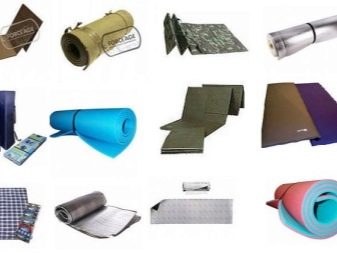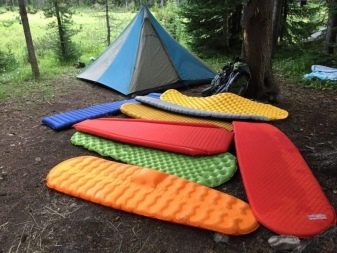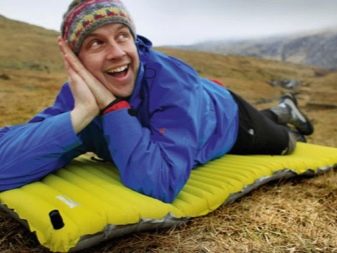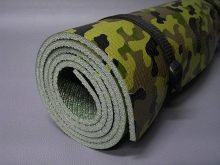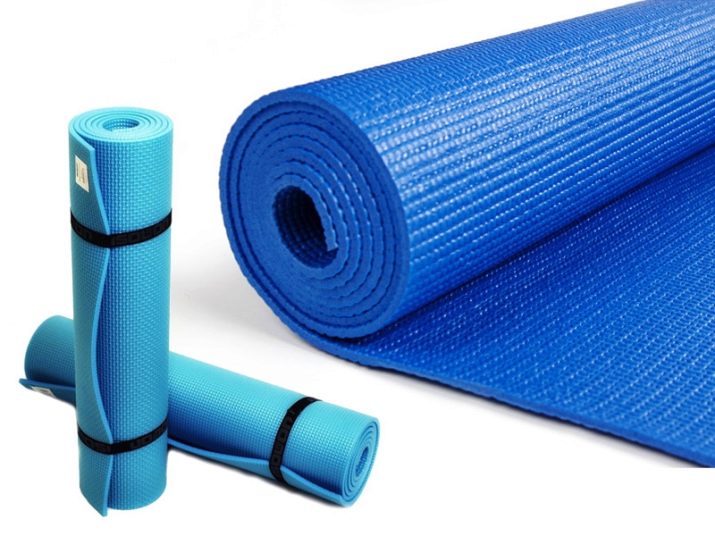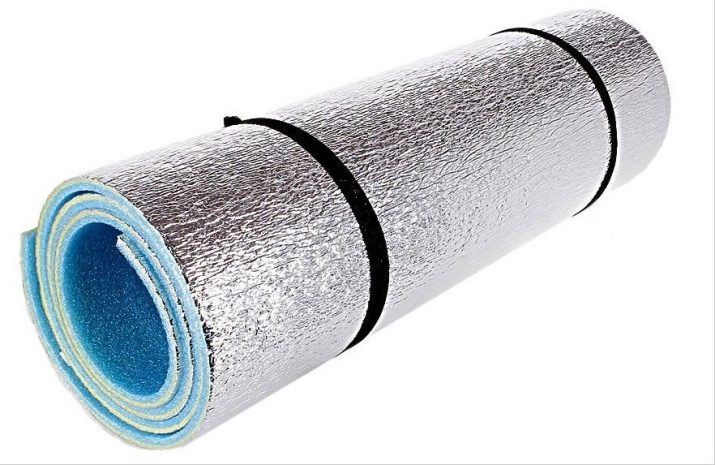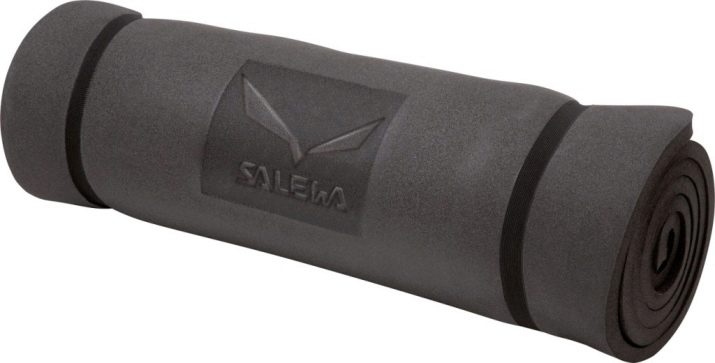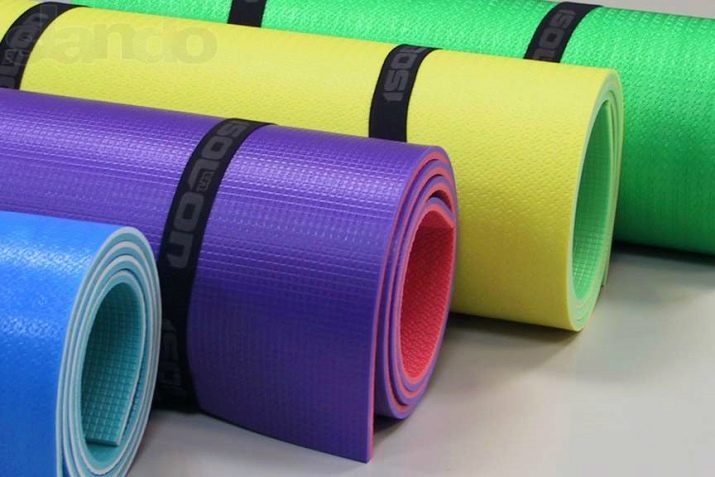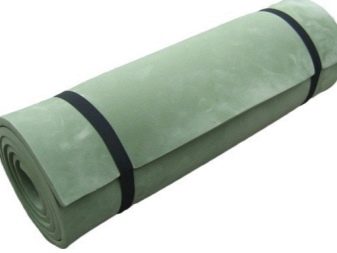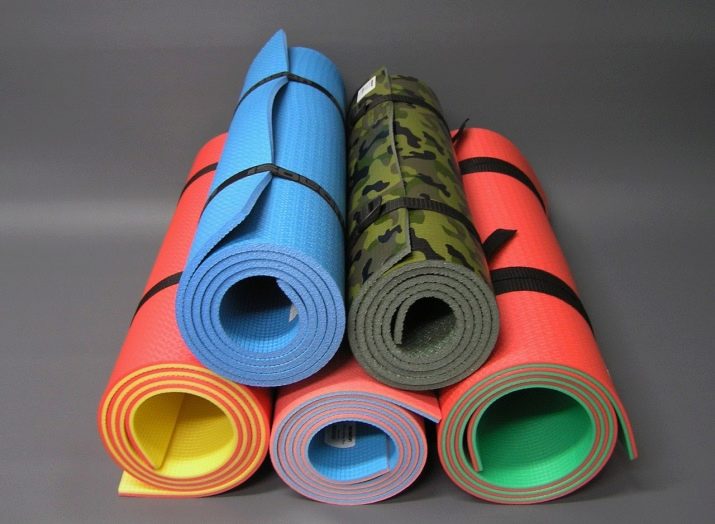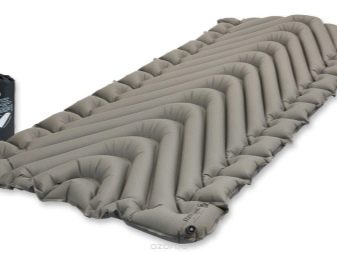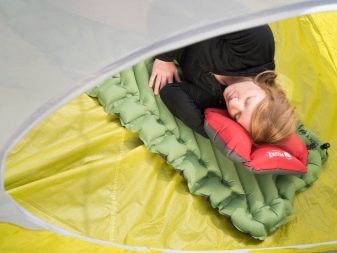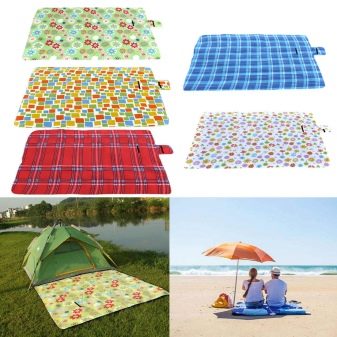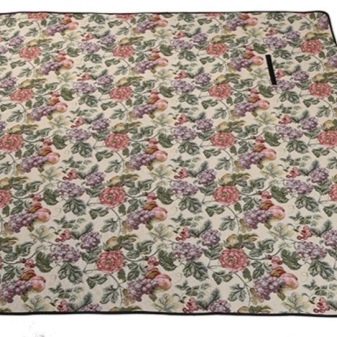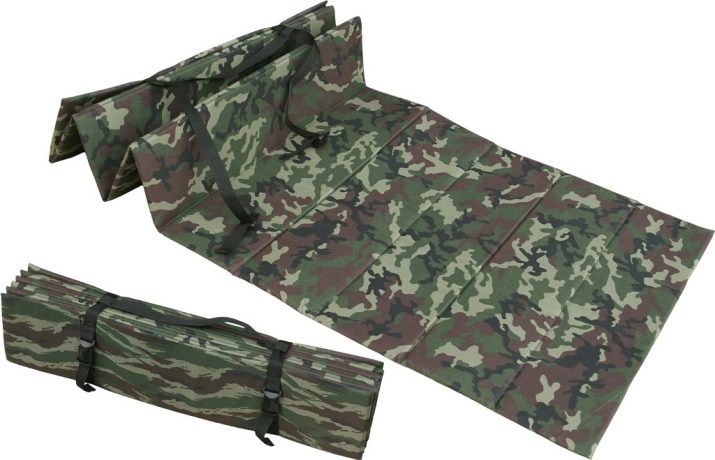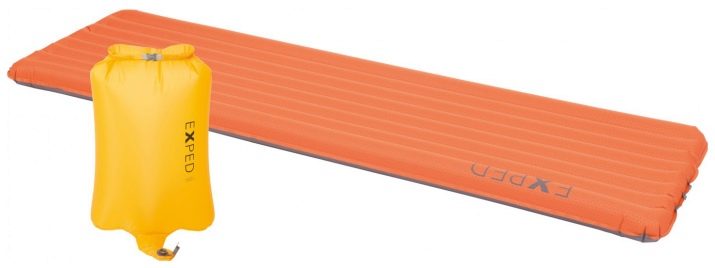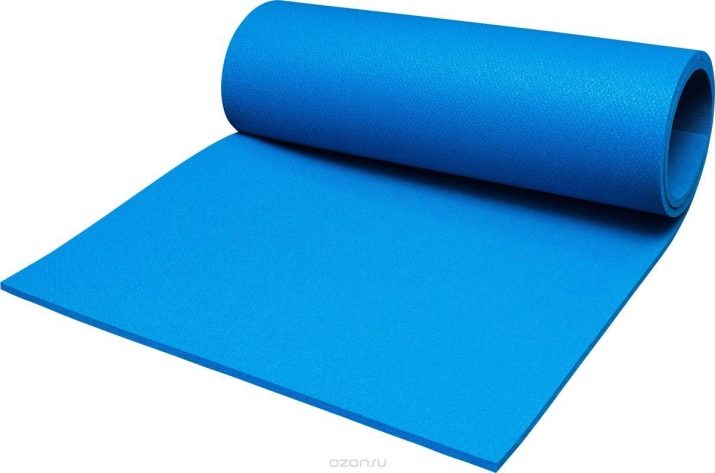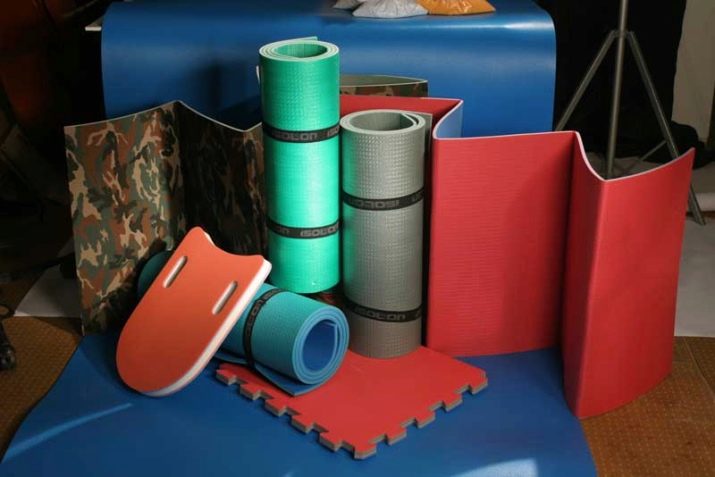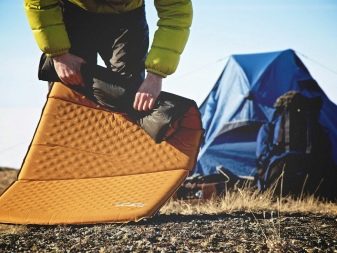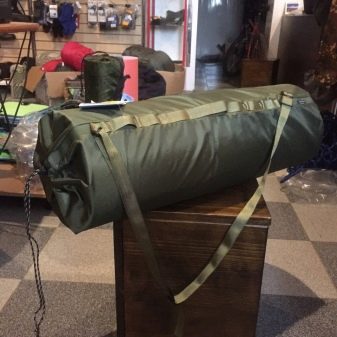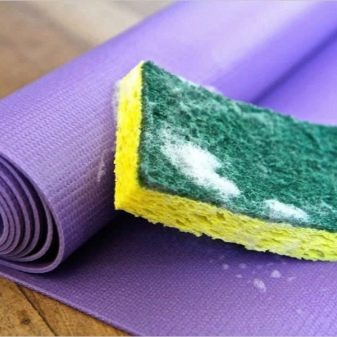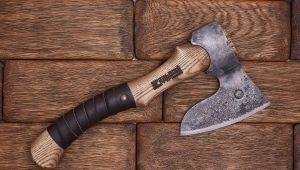Tourist rugs: types and subtleties of choice
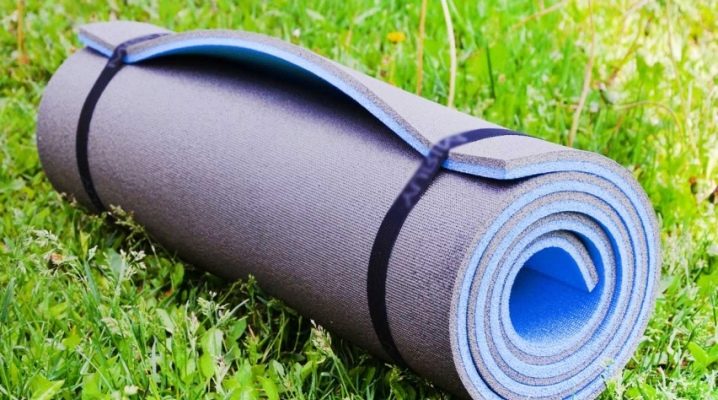
A special hiking rug for tourism is an integral part of tourist equipment. On foot, it will not replace any other litter, like a sleeping bag. This product has its own characteristics, thanks to which it gives special comfort to a person. About what it is and what it is for, will tell the material of this article. In addition, we briefly focus on its varieties, materials of manufacture, as well as the nuances of choice and care.
What is it and what are they for?
Tourist rug is a different-size coating, which is used as insulation between the human body and the ground. This product is the size of a person's height and more, designed for sitting and sleeping tourist. The rug can be used as a sleeping bag protection from moisture and damage. They lay it on the bottom of the tent, on the floor or on the ground, and use it for camping.
In another it is called “karemat”, “foam”, “accordion” (the difference of some names is explained by the types of products). Its purpose is to smooth the irregularities of the surfaces on which the tourist caught the night. In fact, it replaces the soft skin, lapnik.
Materials used
In the production of tourist rugs trademarks use different raw materials. Depending on the type of product, it is made from:
- foamed polymers: unstitched polyethylene foam, polyurethane foam, polyethylene foil (penofol), cross-linked polyethylene foam (isolon), and ethylene vinyl acetate (EVA);
- rubberized material and polyvinyl chloride (PVC), polyurethane foam with a porous structure, placed in a polyester sheath.
Each type of material has its own characteristics, which determines the durability of the product, a different degree of softening of the uneven soil surface, as well as resistance to mechanical damage. For example, the demand for rugs made of unstitched polyethylene due to their price. These products differ from other types of material by a large-pore texture. Such rugs can vary in thickness, color range. This material is sold widely available, so you can simply buy the right cut and make a rug out of it.
However, the material has drawbacks: it wears out quickly, tears, crushes, besides, it does not always have the proper level of thermal insulation. A thick layer causes a large roll size, which is inconvenient in the campaign. Penofol, unlike disposable mats, has a foil lining on one or two sides. Due to the reflection of infrared waves, heat loss is reduced here.
These rugs are inexpensive, you can buy them almost everywhere. In addition, the material provides for its own production of litter of the desired size. The disadvantages of the material are easy crushing, instability to fractures, poor alignment of uneven ground. Products from this material are not designed for frequent and long-term use.
Izolon, in contrast to the first two types of raw materials, is durable. This raw material is made at the Izhevsk plastics plant; it is characterized by density, however, along with its cheapness, it has several drawbacks. For example, the material is not typical of sufficient thermal insulation at low temperature, and even with a large thickness of such a pad takes up a lot of space, which is inconvenient for the backpacker.
Characteristics of EVA exceed other materials in terms of strength and thermal protection. These rugs are always black, are inexpensive, and are characterized by high durability. Raw materials have a soft texture, as well as sufficient flexibility at low temperatures, which means that a rug can be taken from it during a hike during the cold season. The disadvantages of the material are the size of the product with a large amount of working area, as well as the fear of high temperature.
As for the rubberized material, it copes with smoothing uneven soil. The rug that is made of it will not be afraid of irrelevant punctures. However, this raw material can not be called light, its weight is more than that of the foamed analogue for the production of tourist mats. In addition, tourists say, and insufficient insulation.
PVC used for inflatable products is good both in low weight and low cost, and in smoothing uneven ground. However, the mat from which it is made can easily be pierced. Also at such products air transmission on the available seams can be noted. PVC mat is preferable to use in summer due to significant heat loss.
Polyurethane foam mat can be used in different models of tourist bedding. The material is characterized by a sufficient degree of leveling of the soil surface, it is resistant to punctures, weighs a little, is compact in the folded form. However, this product, characterized by high thermal insulation, requires careful use.
Varieties
Today, specialized mats for tourism may be different. Conventionally, they can be divided into several categories. For example, by purpose they are divided into options for hiking, rugs for mountain hiking and trekking, mountaineering, cycling and hiking in the style of fast & light. In addition, there are double models for a family and romantic holiday.
By type of construction, they can be typical, rolled, collapsible and inflatable. Consider the basic nuances of each type.
Foam
Foam mats are the most common and common bedding for hiking. You can buy them not only in specialized stores - they are on the shelves of construction and economic points of sale. They can be laid near the fire, with good quality material, they restore shape without weight.
If desired, they can be cut, they also fold not only into a roll on top of a backpack, but also into it. These products are good for short trips and camping.
Self-inflating
This category includes products with hermetic casing and internal filler, similar to foam rubber. The principle of folding such products is extremely simple. When the valve is opened, the compressed filler automatically expands, forming a self-inflating effect. After the carpet is inflated, the valve is closed.
Experienced users note that the size of the rug is quite acceptable for tourism, however, for the proper density of such a product does not hurt to create additional pressure. When the valve is opened again, the litter is deflated to its original size. The downside of this product is the inability to repair if accidentally punctured.
Inflatable
The man in the street is often confused with ordinary air mattresses. Some of these varieties can be equipped with down with a variety of partitions, which is necessary to prevent cooling. The drawbacks of the products are exactly the same as those of the previous variety. As for the merits, One of them is small packaged size - some modifications can fit in a tourist pocket.
These products withstand low temperatures, in addition, they provide for adjusting the density of inflation. You can inflate them and mouth, but it is better to use a compact pump (for example, mini, electric, pump-case).
These products are more expensive than other analogues, however, they are well suited for those who are engaged in mountaineering and ultralight hiking style.
Camping
These mats attract the attention of buyers by the presence of stable supports.Outwardly, they resemble clamshells, which are characterized by considerable dimensions in the folded state. Such products find their customers because not every person can sleep on the ground: there are those who barely manage to fall asleep on their cots.
These products have a high degree of wear resistance, they increase the comfort of the user. But, along with this, they can not be called comfortable in the campaign. They do not have adequate insulation, and therefore it is better to use them in the warm season.
Folding
Products of this type are a set of interconnected PES plates packed in a textile casing. The upper part of the folding mat is made of fabric, the bottom has a synthetic base. In comparison with products from a single sheet, these models have their drawbacks. In addition to the fact that they are divided into sections, which reduces the user's comfort, these beddings are impractical and get wet, and therefore need a protective cover.
Popular manufacturers
Today, many trademarks for tourism mats are produced. Among the rich range of products can be identified several companies, for example, Therm-a-Rest, Exped, Penolon. The first brand manufactures products for mountain trekking and trekking, this product is characterized by low weight and user comfort. The line includes sports inflatable and self-inflating litter for tourism in the summer and winter season. Models differ in average density and thickness up to 6.3 mm.
Among other brand options, noteworthy are inflatable products for mountaineering, which are characterized by greater warmth and the possibility of using them at minus temperatures up to -25 degrees. All products of the company are presented in four sizes, due to which the buyer can choose the option based on their own preferences.
Swiss brand products Exped inferior to the first brand, but in its range there are many noteworthy mats. They have a slightly heavier weight, as well as a little worse thermal insulation, but at the same time they are more compact and can be suitable for both one and two users. For example, for tourists who prefer to sleep on the ground with greater comfort, the manufacturer offers options with a width of 105 cm.
Travel mats "Penolon" Designed for sports, travel and active spending time. The company offers the attention of buyers of double-layer products for tourism, sports and recreation, made of PES. The litter can be used for bedding, it is light and durable. The product is characterized by low thermal conductivity and high water-repellent properties.
How to choose?
Buying a tourist rug in a tent or for a short day trip, you should rely on a number of criteria. For example, heat insulation, comfort, size, reliability, weight, volume and cost will be key ones. As practice shows, in the conditions of the Arctic, the same foil mats with a thin layer are inferior to products made of rigid foam. Izhevsk floor mats miss a significant proportion of heat, however, their users do not freeze.
Specific operation will determine the size of the product. For example, someone has a rather small litter, while another user will need a large-sized modification. Model size should be at least 180 cm in length and 60 in width. Imported counterparts have dimensions of 185x50 (52) cm, more comfortable ones include dimensions of 195 (200) x65 cm.
The structure of the material is also important: variants with closed cells will not allow air and moisture to pass through. Analogs with open cells have a layer of protection, which increases their wear resistance. PVC options at low temperatures break and crack. Optimal products - foam or PP mats.
The shape can be both rectangular and tapering to the legs, which reduces the weight of the litter.However, the best products, according to users, are considered to be rectangular (when placed in a tent, there are no gaps). As for the type of model, many people like the options with a filler. It is necessary to choose between options with foam rubber and down.
It is necessary to take into account the indicators of the minimum temperature in order to have an idea of the season of a particular product. Rugs warm the body in different ways, trekking products warm a person at a temperature of up to -8 degrees, in summer options this figure is +5 degrees, winter ones maintain a mark of -30 degrees.
When buying, you need to take into account the density of the material, the size in a minimized form and weight. Density can range from 75-150 D for puncture-resistant products and from 20 to 30 D for light litter. The latter are suitable for use inside tents; when used outside, they quickly become useless.
Ideally, the mat should be ultra-compact, not limiting the amount of equipment. Weight will determine the speed of movement and comfort of the user. However, the thicker and warmer the mat, the heavier it is. Here you have to choose between light (up to 800 g), self-inflating (up to 600 g) and inflatable (300-500 g) products.
Operation and care
The use and care of the rug depends on the type of specific species. For example, sheets of rigid foam carry along the back of a backpack, which is designed for such equipment. Folding and compact analogs packaged inside a hiking backpack. Flexible is recommended to roll into tight rolls under the diameter of the backpack, creating from them a kind of pipe-frames.
In addition, depending on the variety, some products include carrying the back or side of a backpack. The method is not the most convenient, besides not protecting against accidental mechanical damage. Therefore, in this case, you have to pack a mat in a special protective case-tubemade of durable textile.
In order that the rug is not lost on the road, the tube is attached to the backpack.
In winter, you can take a couple of foam mats on a camping trip. This is explained by the ability of the foam to absorb moisture, which is why it freezes inside the formation, which impairs thermal insulation. Putting one litter on the other, it will be possible to smooth out the unevenness of the soil and partially achieve greater thermal insulation. If the surface is too uneven, the litter can be put under the sleeping bag, and under it itself - any things that level the surface.
On arrival home, the mat must be dried in the open state. As a rule, it takes at least a day at room temperature. After that, it must be removed before the next use. You can store a monolithic product behind the sofa, on the closet, under the bed. Dirty product washed with a damp cloth or brush.
In order to quickly and effectively return cleanliness to a contaminated karemat, it is carried into the bathroom; one of the sides is poured with water from the shower. Immediately soak the tiled wall of the bathroom, stick to it karemat moisturized side. The mat will immediately stick to the wall, which will allow you to quickly wash out the dirt from the second side. Wash it with water, pouring out of the shower. With proper pressure, the dirt from the embossed surface will be washed quickly. After the product must be carefully dried and removed for storage.
How to choose a rug for tourism, see the following video.

